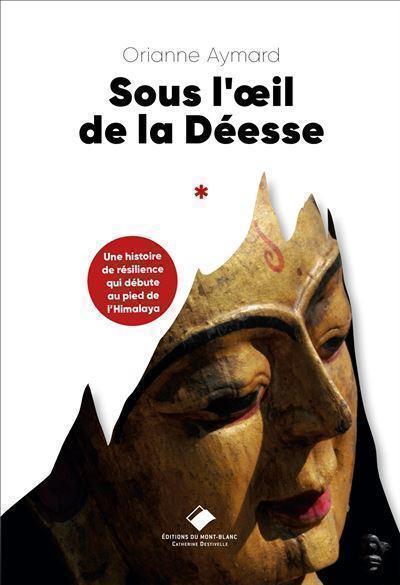
Under the Eye of the Goddess
Content : This is the story of, “a woman who survived a hemorrhagic cerebral accident in the foothills of the Indian Himalayas, a few meters from the tomb of the great Indian saint Ma Anandamayi, an incarnation of the Mother Goddess for millions of people. Going beyond neuro-medical recommendations, she decides, years later, to pursue her dream and climb the fourth highest mountain in the world, Lhotse (8,516m), the sister Peak of Mount Everest. Despite the chaotic course of her expedition and the criticisms she was subject to, on May 23rd, 2019, she finds herself on the top of Lhotse, contemplating in front of her Chomolungma, or Everest, the Mother Goddess of the World.”
Under the Eye of the Goddess is a true “story of resilience and self-belief of a woman on the edge of life,” and represents a real victory over death.
First of all, this story, autobiographical in nature, is a way to inspire others, particularly women, to attempt their own adventures and to show that normal people can make their dreams come true, whatever they may be. Every individual possesses within them untapped resources, both physical and mental, from which they can draw, and has the capacity to bounce back despite challenges, overcoming fears, anxieties, and doubts. The author is not talking about a major achievement. She is neither the first nor the last person to climb Lhotse. Rather she is talking about someone ordinary who, despite life's difficulties, has been able to get up and continue to advance against all odds towards their dreams.
This is also a reflection on death, an omnipresent death that never ceased to invite itself throughout the expedition and remind one of the impermanence of the body and the transience of existence. To achieve this ascension, in a way, is to contemplate one's own destiny and accept the reality of death in all its dimensions - suffering, decadence, destruction; but also to triumph over it. In relation to the author’s academic background (Ph.D. in Religious Studies) and her publication When A Goddess Dies (Oxford University Press, New York, 2014), the references made to the world of Buddhism and Hinduism, in this context, bring to this manuscript real richness, relevance, and undeniable validity, because it is strongly supported by a solid network of both theoretical and empirical knowledge.
Furthermore, this book seeks to bring the author’s vision, as a woman, of the high mountain environment, an environment that is still very masculine and macho no matter what people say. She has seen through this expedition that her status as a woman in an exclusively male environment has been an obstacle more than anything else. Following on Lydia Bradey’s account, Going Up is Easy (Penguin, 2015), which is the story of the first woman to climb Everest without oxygen, the author, therefore, wishes to break this high-level image of mountaineering associated with men, like many other fields, and give a more feminine and less performance-oriented vision of high mountains. This story then represents a strong symbol of the affirmation of the Feminine and is in itself an undeniable contribution.
It delves into the issue of femininity, exploring what it implies, practically speaking, to be a woman on an expedition constantly surrounded by men. The issue of menstruation, a generally taboo topic that is rarely addressed, especially when it relates to Himalayism, is specifically discussed, notably in view of its physiological implications at very high altitudes, but also the conservative, traditional and patriarchal rules prevailing on the Indian sub-continent and other parts of the world. This gives a more feminine angle, that differs from the great majority of literature on mountaineering, written mostly by men.
It also completes the ascension stories of Lhotse, an unjustly ignored and often neglected mountain in front of Everest on account of its being 300 meters lower. With the author sharing the same route as the Everest climbers (until camp 4, 7,850m), this story, as well, gives a different perspective on the neighboring ascent of Everest, which, as the media have shown, has seen one of the worst seasons in its history with a total of eleven deaths. As a former diplomat for the French Ministry of Foreign Affairs and Delegate for the International Committee of the Red Cross (ICRC), the author’s knowledge of crisis contexts, notably in Haiti just after the earthquake, also offers a new insight on this.
The full text in English is available, written by the author herself.
Orianne Aymard speaks English fluently and organizes workshops and conferences around her experience, with subjects such as: inspiration, leadership, resilience, motivation, crisis management, etc.

